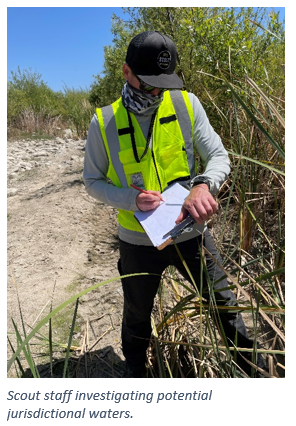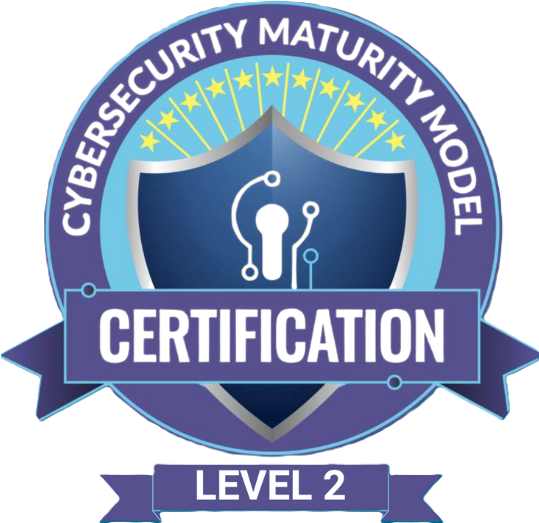As those who work with Clean Water Act 404 permits from the U.S. Army Corps of Engineers (Corps) know, the Navigable Waters Protection Rule (2020 Rule) made “significant” changes to federal jurisdiction of “waters of the United States.” We’ll focus in this article on a couple of very significant changes to the Clean Water Act 404 jurisdiction under the new regulations, adjacent wetlands, ephemeral streams, and the significant nexus test, as well as what may be in store for the 2020 Rule under the new administration.
Background of the 2020 Rule
For those who may be new to the “now you see it, now you don’t” world of Clean Water Act 404 jurisdiction, I’ll briefly summarize the background leading up to the 2020 Rule. Two different tests for wetlands and waters of the U.S. resulted from the split decision of the 2006 Supreme Court case, Rapanos v. U.S. Supreme Court Justice Scalia’s plurality decision of four judges required waters of the U.S. to have a relatively permanent connection to a “traditionally navigable water,” and a wetland to have a continuous surface connection with a “relatively permanent water.” Four Supreme Court justices completely disagreed with the plurality’s test, and the ninth justice, Justice Kennedy, voted not to agree with the plurality test, but instead created an alternative test, the “significant nexus” test. This test required that wetlands and non-navigable tributaries significantly affect the chemical, physical, and biological integrity of a downstream “traditionally navigable water.”
Needless to say, this caused much uncertainty as well as lawsuits in 404 permitting as well as 402 permits. The majority of courts recognized both Scalia’s “relatively permanent water” and Kennedy’s significant tests, and some courts – for example, the Ninth Circuit – adopted the significant nexus test as the basis of determining waters of the U.S. jurisdiction. Subsequently, the 2015 Rule, based on a review of 1,200 publications in peer-reviewed scientific literature, concluded among other things that ephemeral streams and adjacent wetlands could impact the chemical, physical, and biological integrity of downstream “traditionally navigable waters.” See the Union of Concerned Scientists January 24, 2020 blog, “EPA’s New Water Rule a Mockery of Science and the Clean Water Act” here.
In 2019, the 2015 Rule was repealed, and the 2020 Rule was finalized the following year.
The 2020 Rule
One of the major changes to 404 Clean Water Act jurisdiction under the new 2020 Rule is the abandonment of the significant nexus test in favor of Scalia’s “relatively permanent water” test. A U.S. Army Corps of Engineer regulator recently told me, “no more significant nexus tests.” This will undoubtedly diminish federal jurisdiction of waters of the U.S., which will make some folks happy and others displeased.
The second change was to the definition of “adjacent wetlands.” For many years, adjacent wetlands were defined as “bordering, neighboring, contiguous,” which gave the Corps some leeway in determining jurisdictional wetlands. The new test under the 2020 Rule is that adjacent wetlands must “abut, or at least touch at least one point” of a “relatively permanent water.” Again, this will diminish federal jurisdiction of waters of the U.S.
And finally, the 2020 Rule set sail and left behind “ephemeral streams,” excluding them from waters of the U.S. coverage, leaving intermittent and perennial streams as jurisdictional.
Rapanos, the 2015 Rule, and now the 2020 Rule have been very good to lawyers. A very good summary of waters of the U.S. litigation can be found here: “Defining Waters of the United States/Clean Water Rule,” updated through March 26, 2021.
Recently, two Native American tribes in New Mexico sued the federal government for excluding ephemeral streams from waters of the U.S. jurisdiction under the 2020 Rule. See the Santa Fe New Mexican article “Two New Mexico Pueblos Sue EPA over Trump-era Water Rule” for further information on the lawsuit.
The Future of the 2020 Rule
The new administration quickly rolled out Executive Order 13990 Protecting Public Health and the Environment and Restoring Science to Tackle the Climate Crisis, requiring federal agencies to
During last week’s annual meeting presented by the Association of State Wetlands Managers, one panel, along with the moderator, all agreed that the 2020 Rule will be repealed and replaced, eventually. However, like drought-quenching rains in California, it will take a while. The fix: Congress needs to define waters of the U.S. better.
For the time being, as one panel member stated, “it’s a mess,” and the flotilla of lawyers answering the summons of the late famous rock musician Warren Zevon will more likely than not end up “navigating” the Clean Water Act regulations.
Navigating the Clean Water Act process can be complex and daunting. Scout is ready to help guide you through the process. For further inquiries about Clean Water Act compliance, please contact hello@scoutenv.com.














